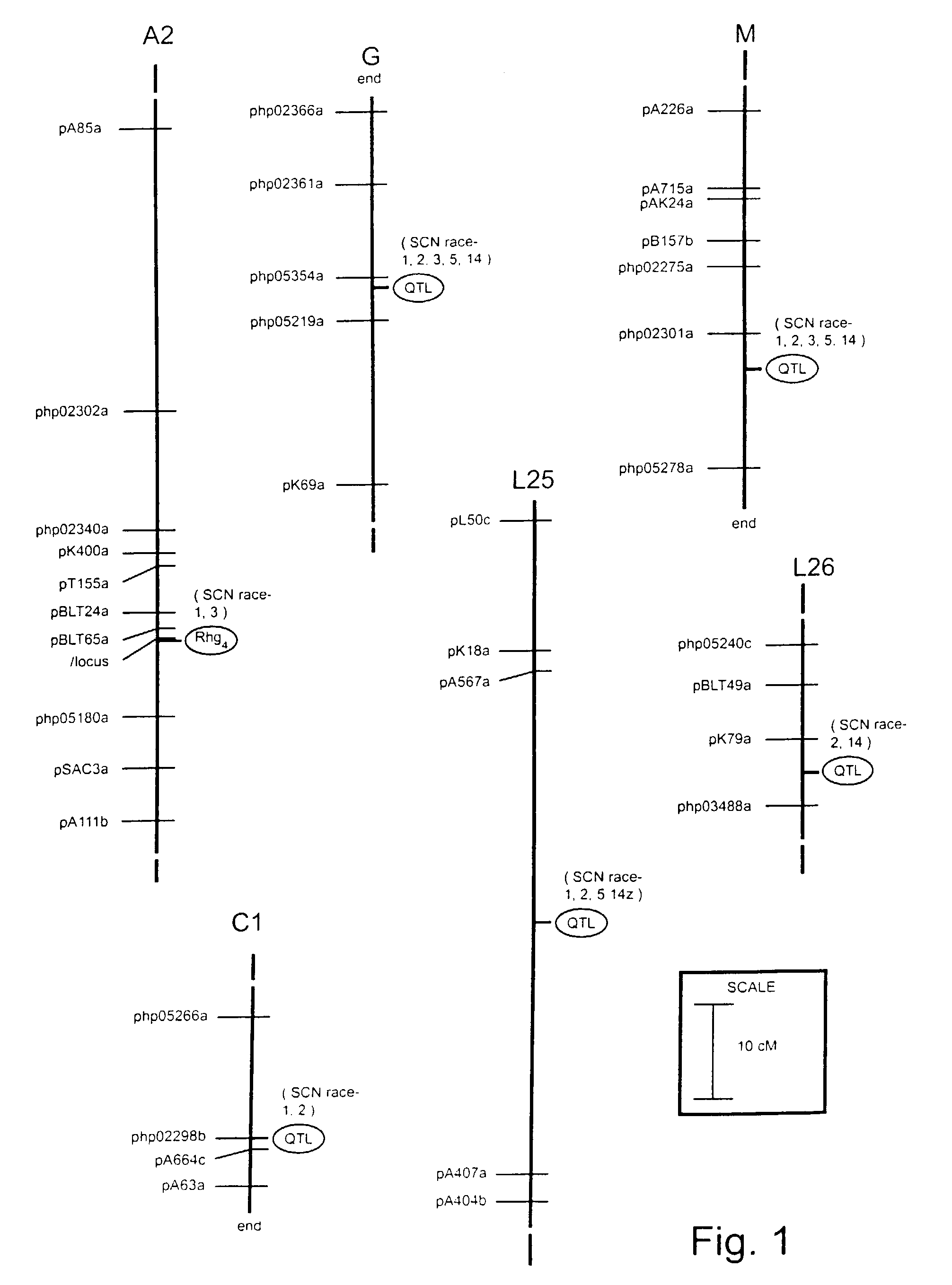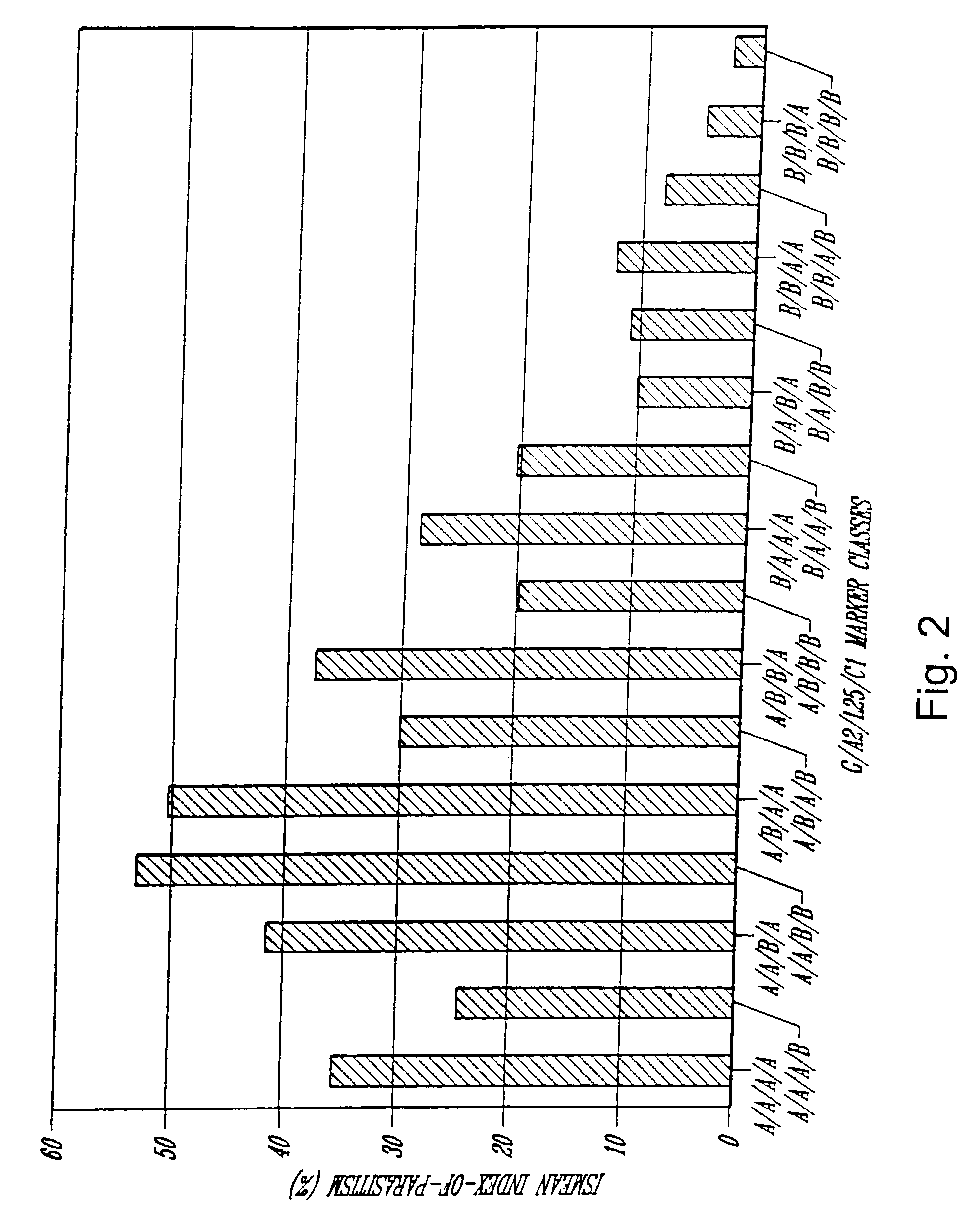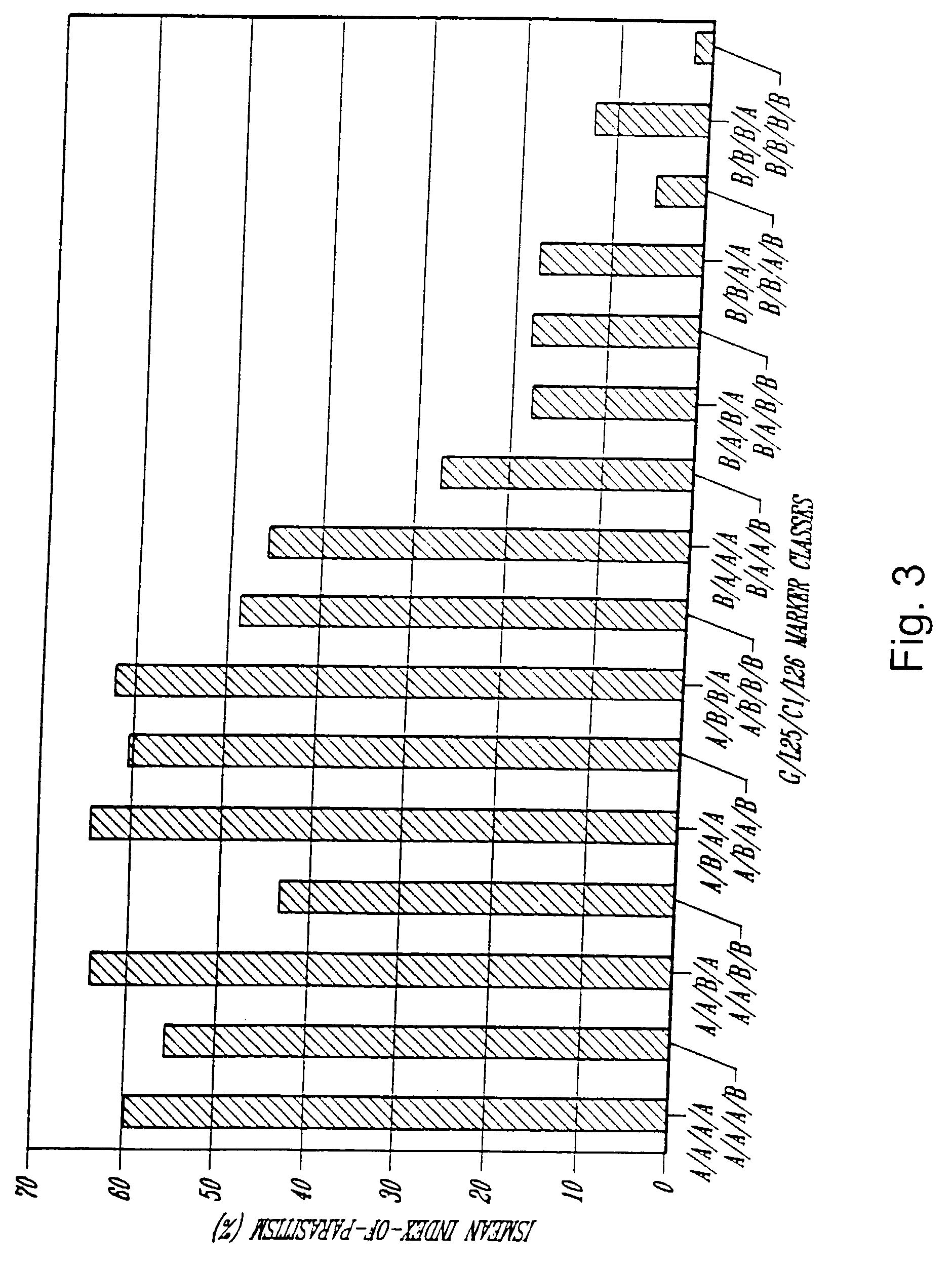Quantitative trait loci associated with soybean cyst nematode resistance and uses thereof
a technology of soybean cyst nematode and quantitative trait loci, which is applied in the field of cloning of genes for resistance to soybean cyst nematode, can solve the problems of not providing resistance to all known races, uneconomical and potentially environmentally unsound use of nematocide in soybean production, and major production problems
- Summary
- Abstract
- Description
- Claims
- Application Information
AI Technical Summary
Benefits of technology
Problems solved by technology
Method used
Image
Examples
example 1
Materials and Methods
Germplasm Development and Characteristics
[0033]A population of 328 recombinant-inbred lines (RILs) was licensed by Pioneer Hi-Bred International, Inc. from Iowa State University and used in this study. This population originated from a cross between two soybean G. max lines, PI 437.654 and BSR101, and was developed by single-seed-descent inbreeding from the F2 to the F6:7 generation (Baltazar and Mansur 1992; Keim et al. 1994). Pi 437.654 is a plant introduction from China in the USDA soybean germplasm collection received from the USSR in 1980 (Nelson et al. 1988). It is in Maturity Group III and is resistant to all known races of SCN. BSR101 was developed at Iowa State University and is in Maturity Group I and is susceptible to SCN (Tachibana et al. 1987). At the I locus, PI 437.654 carries the i allele for black or imperfect black seed, and BSR101 carries the ii allele for yellow or green seed. The RIL population for these alleles was scored and the / locus was ...
example 2
Positional Cloning
[0089]Markers linked to each of the six mapped QTL for SCN resistance are used in positional cloning of genes that reside within those QTL. Positional cloning first involves creating a physical map of a contig (contiguous overlapping of cloned DNA inserts), in the genomic region encompassing one or more marker loci and the target gene. The target gene is then identified and isolated within one or more clones residing in the contig. Having a clone of a gene allows it to be used in genetic studies, transformation, and the development of novel phenotypes.
[0090]Mapped SCN markers, especially those most closely linked to the QTL and those that flank the resistance QTL on both sides are used to identify homologous clones from soybean genomic libraries, including, for example, soybean genomic libraries made in bacterial artificial chromosomes (BAC), yeast artificial chromosomes (YAV), or P1 bacteriophage. These types of vectors are preferred for positional cloning because...
PUM
| Property | Measurement | Unit |
|---|---|---|
| Temperature | aaaaa | aaaaa |
| Fraction | aaaaa | aaaaa |
| Length | aaaaa | aaaaa |
Abstract
Description
Claims
Application Information
 Login to View More
Login to View More - R&D
- Intellectual Property
- Life Sciences
- Materials
- Tech Scout
- Unparalleled Data Quality
- Higher Quality Content
- 60% Fewer Hallucinations
Browse by: Latest US Patents, China's latest patents, Technical Efficacy Thesaurus, Application Domain, Technology Topic, Popular Technical Reports.
© 2025 PatSnap. All rights reserved.Legal|Privacy policy|Modern Slavery Act Transparency Statement|Sitemap|About US| Contact US: help@patsnap.com



